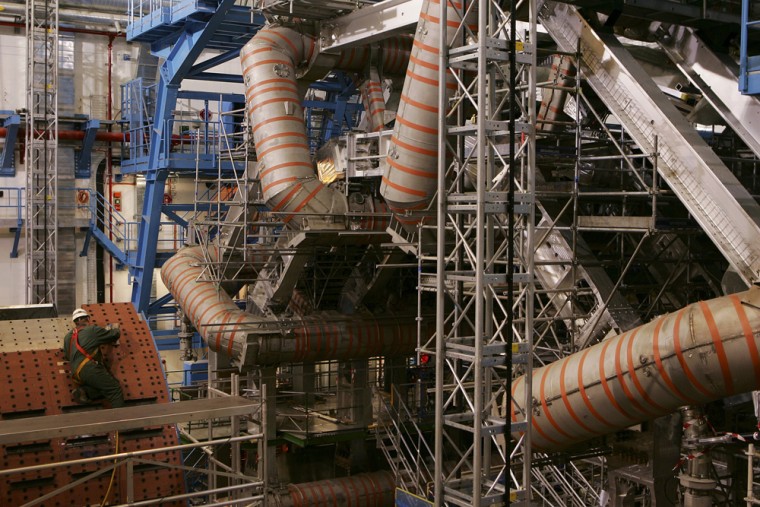Deep underground on the Franco-Swiss border, someone will throw a switch next year to start one of the most ambitious experiments in history, probing the secrets of the universe and possibly finding new dimensions.
The Large Hadron Collider — a 17-mile-long (27-kilometer-long) circular particle accelerator — at the CERN experimental facility near Geneva will smash protons into each other at unimaginable speeds, trying to replicate in miniature the events of the Big Bang.
"These beams will have the kinetic energy of an aircraft carrier slammed into the size of a zero on a 20-pence piece," Brian Cox of Manchester University told the annual meeting of the British Association for the Advancement of Science.
"We are going to make mini-Big Bangs. There has never been such a jump in particle physics. It will go into an area that we don't really understand," he added.
Dark secrets
The fundamental goal of the massive machine is to answer the basic but crucial question of how matter was created at the birth of the universe.
"We don't know what 95 percent of the universe is made of — which is a bit embarrassing for a subject that claims to be fundamental," Cox said. "There is dark matter. It is all over the place, but we have no idea what it is.
"There is also something called dark energy, and that is an even bigger question. It makes up about 70 percent of the energy in the universe but again we have absolutely no idea what it is.
"It is an incredibly exciting machine. It will be turned on next year and run for at least a decade and probably 20 years, and the first results — if the machine behaves itself — should start coming out within a year," he added.
Tiny black holes
If the theories are correct, the machine will create tiny black holes that evaporate, and possibly even find particles indicating that the three dimensions known to mankind are just a fraction of those that actually exist.
"That would be an even bigger headline than the black holes. It could be that there is a whole new universe a millimeter away from our heads, but at right angles to the three dimensions that are here," Cox said.
"That would be a real paradigm shift — our relegation to a little sheet in a multidimensional universe. That kind of thing is really profound and will capture the imagination that perhaps the origin of mass won't, although it should.
"For the first time in many decades we have built a machine that exceeds our powers of prediction. New processes are bound to be discovered," he added. "We are truly journeying into unknown territory."
Cox dismissed worries that by adventuring into the unknown and creating tiny black holes, the machine could even threaten to destroy the planet.
"The probability is at the level of 10 to the minus 40," he said.
